Bodrum museums are much more than exhibition halls; they are places where history, culture, and local life come together. Every visit offers insights not only into the city’s rich past but also into the history of humankind. They attract history enthusiasts and travellers throughout the year—and you shouldn’t miss them either.
Anatolia is the cradle of our civilization, where we learned to build cities, engage in agriculture, use money, shape iron, and even make beer! The Mediterranean, on the other hand, is where our modern culture was born. Along the Aegean coast of Turkiye, you can take a journey through time and trace both Anatolian and Mediterranean histories at the same time.
Bodrum was once the capital of Caria thousands of years ago, the place where the mighty satrap Mausolus lived and the father of history, Herodotus, was born. Centuries later, just before the Knights Hospitaller took control, it became an important port representing the wealth of the Mediterranean. With the Industrial Revolution, shifting power in the Aegean left Bodrum as a poor and desolate fishing town. It was so remote and forgotten that the Ottomans considered living there a punishment and often exiled intellectuals and dissidents to the town.
Today, Bodrum is on the rise again as a popular touristic destination. Like every nation in history—and even like each of us—ancient Halicarnassus had its ups and downs. The Bodrum museums allow us to follow this exciting roller coaster ride.
On this page
All the Bodrum Museums
I enjoy meeting new people from different cultures. I like having conversations about their daily lives, habits, likes, and dislikes. These conversations help me learn about the society they live in. Similarly, Bodrum museums are valuable resources for discovering the local culture and history. Considering the region’s rich background, I think Bodrum deserves more museums. Yet, here are the ones we have so far.
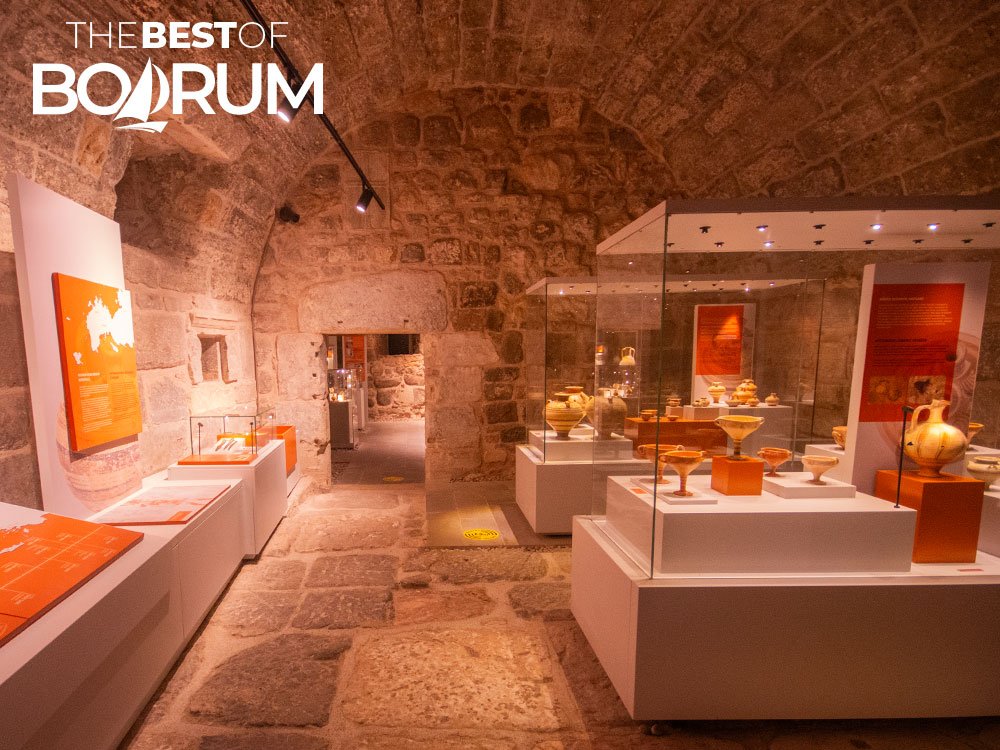
There are officially four Bodrum museums at the time of writing. However, there is much more to discover for those who are willing to keep exploring. The Antique Theatre, Myndos Gate, the Ottoman Shipyard, and many other sites patiently await their visitors, even if they are not classified as museums. To enrich cultural awareness, visiting local art galleries and observing what daily life looks like for locals can also provide a strong foundation for understanding Bodrum’s culture.
Bodrum Underwater Archaeology Museum
The Bodrum Underwater Archaeology Museum is one of the oldest and most significant underwater archaeology museums in the world. Bodrum’s most well-known landmark, the Bodrum Castle, houses the museum inside its walls. Aside from its historical value, the castle and the museum are also great for sightseeing and relaxation. This makes it one of the most visited Bodrum museums, and definitely my favourite.
Imagine a 3,500-year-old shipwreck displayed in a 700-year-old castle built with 2,600-year-old fragments of the Mausoleum at Halicarnassus. The castle itself was constructed by the Knights of St. John in the 15th century. The exhibitions include numerous items and artefacts from various periods, starting from the Bronze Age.
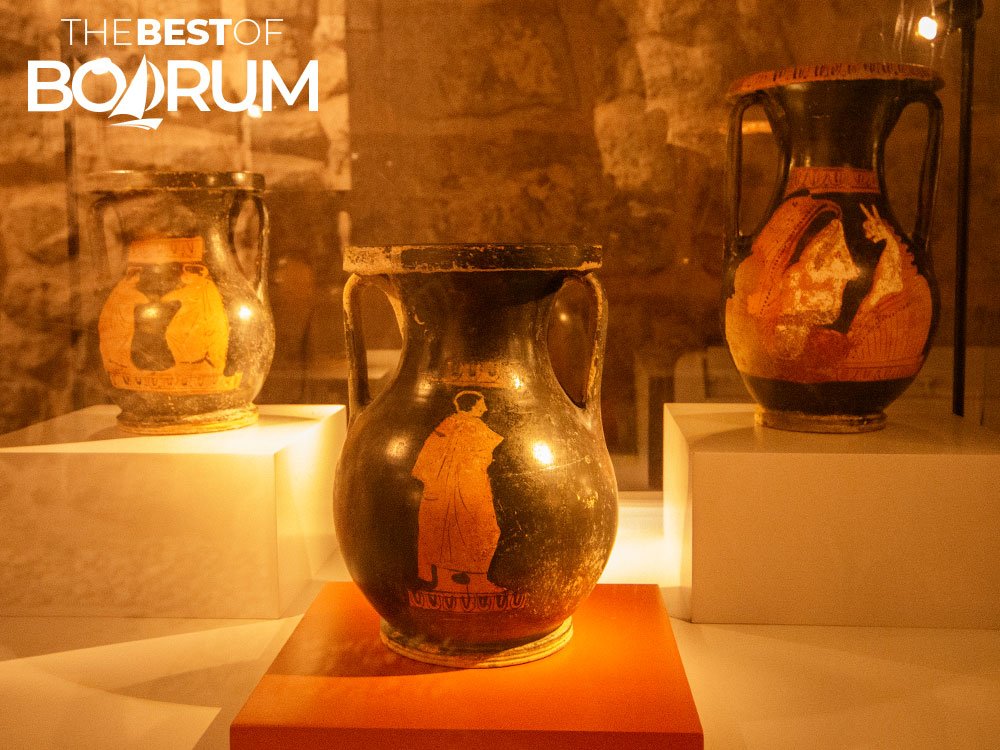
Although the museum and the castle share the same space and have a single common entrance, they evoke very different feelings for me. The most popular Bodrum museum represents one of the most exciting branches of archaeology with its unique findings. The castle, on the other hand, feels like an arboretum, with plant specimens from across the Aegean. For me, it is a place of relaxation where I often take a book and spend hours. That’s why I decided to address the Bodrum Underwater Archaeology Museum and Bodrum Castle separately in The Best of Bodrum.
Bodrum Maritime Museum
The second museum on the list sheds light on Bodrum’s recent history and local culture, revealing what truly lies behind the town’s touristic face.
Not long ago, Bodrum was a small town with a modest economy, relying mainly on fishing and sponge diving. Life for the locals was challenging, battling the rough waves and depths of the Aegean to earn a living. In the Bodrum Maritime Museum, you can explore traces of this maritime past that have profoundly shaped today’s local culture. The museum displays numerous fishing boat models, many of which once belonged to the grandparents of today’s residents. Especially if you are a fan of wooden model boats like me, you shouldn’t miss this one.
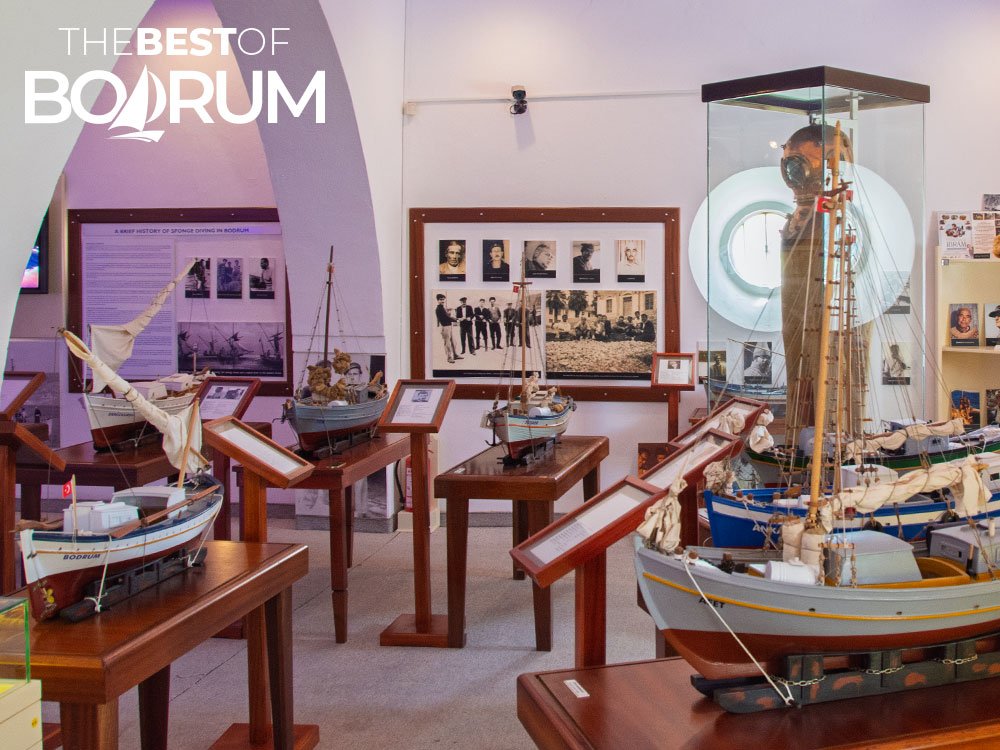
The museum also exhibits one of the world’s largest and most important seashell collections, along with a few personal items belonging to a writer I greatly admire – the Fisherman of Halicarnassus. I personally know some of the individuals behind the idea of establishing a museum dedicated to Bodrum’s maritime history. I witnessed their incredible efforts to keep this private museum running. Believe me, it’s truly challenging. I deeply appreciate their dedication and hard work. Visiting this museum is also the best way to support their cause.
The wide collection of skilfully crafted model boats, seashells from around the world, and personal belongings of a writer who made Bodrum what it is today make this special place my second favourite among the four Bodrum museums.
Museum of Mausoleum at Halicarnassus
After his father’s death, Mausolus became the ruler of Caria in 377 BC. His first action was to relocate the capital from Mylasa to the beautiful harbour city of Halicarnassus. As an admirer of beauty and architecture, he initiated several construction projects to beautify his new capital.
Mausolus also had a deep desire for immortality beyond his love for aesthetics. To achieve this, he invited renowned architects from mainland Greece to construct a monumental tomb for himself. His intention was to secure his eternal existence alongside the gods. This tomb later gained fame as the Mausoleum at Halicarnassus and became one of the Seven Wonders of the Ancient World.
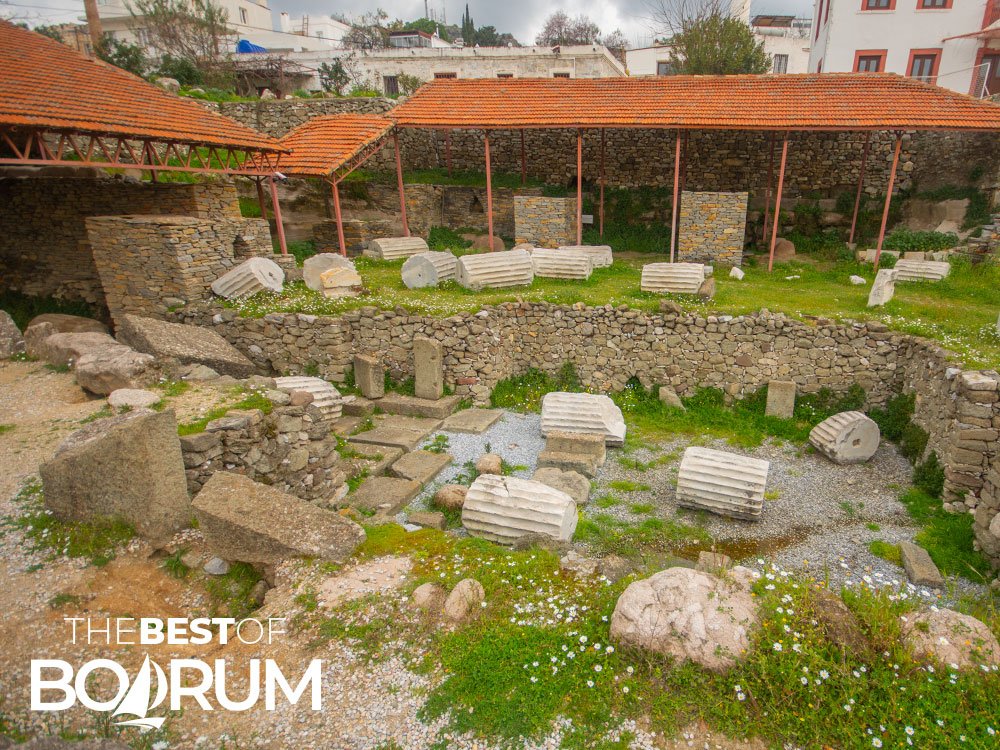
Unfortunately, the Mausoleum was destroyed in an earthquake in the early 15th century. However, Mausolus achieved eternal fame by lending his name to all monumental tombs worldwide. Today, the Museum of the Mausoleum at Halicarnassus is one of the Bodrum museums. Although there isn’t much left to see, the foundations of the ancient building are still there and continue to attract tens of thousands of visitors every year.
Some of the surviving pieces are now displayed at the British Museum. If you have seen them and taken photos, sharing them with me would be a priceless contribution to The Best of Bodrum.
Zeki Muren Museum
Zeki Muren was one of the most famous and influential figures in Turkiye’s art history. Even three decades after his death, he remains the most respected singer in Turkish classical music.
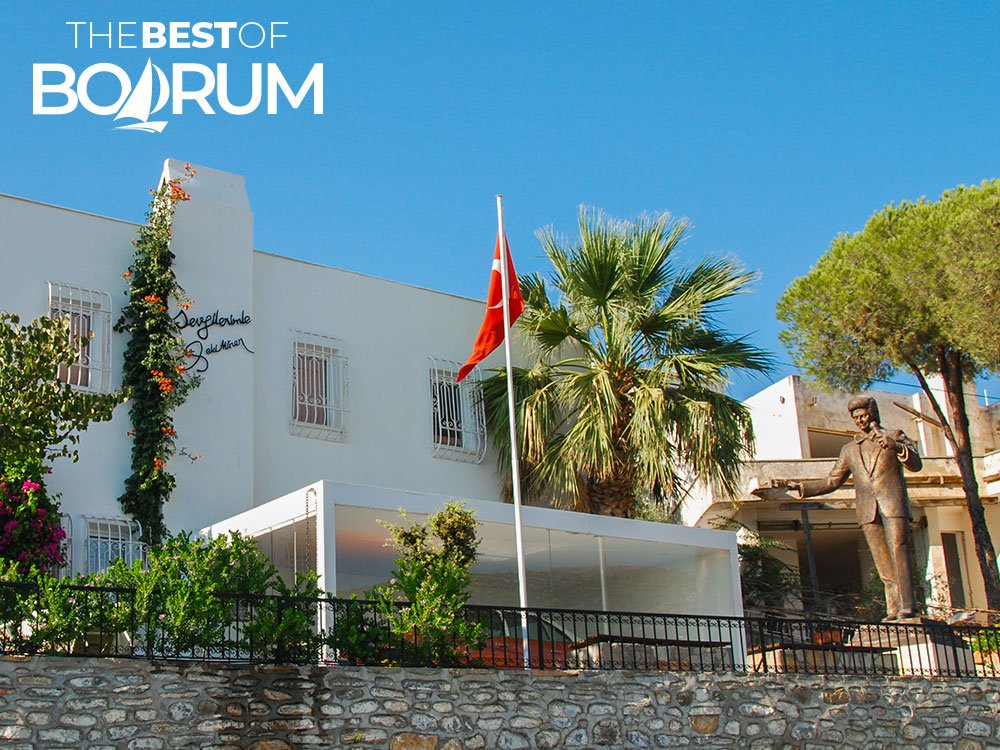
Following his doctor’s advice, he moved to Bodrum in 1980 and fell in love with the serenity of the town. Although his unconventional lifestyle was quite different from Turkiye’s conservative norms, the locals warmly welcomed him. I haven’t met anybody in Bodrum who is over 40 and doesn’t have a memory with him. They still remember him affectionately and call him “The Pasha of Bodrum.”
His home is now the Zeki Muren Museum. Fans of all ages visit daily to pay their respects and learn about his life. I believe this museum has a special place among Bodrum museums, not only for the legacy of Zeki Muren but also as an excellent example of a typical Bodrum house for those interested in architecture and local culture.
More Information
The Bodrum museums are only a part of Turkiye’s rich cultural heritage. If you want to explore other museums across the country, the Ministry of Culture and Tourism’s Museums website is the best place to start.

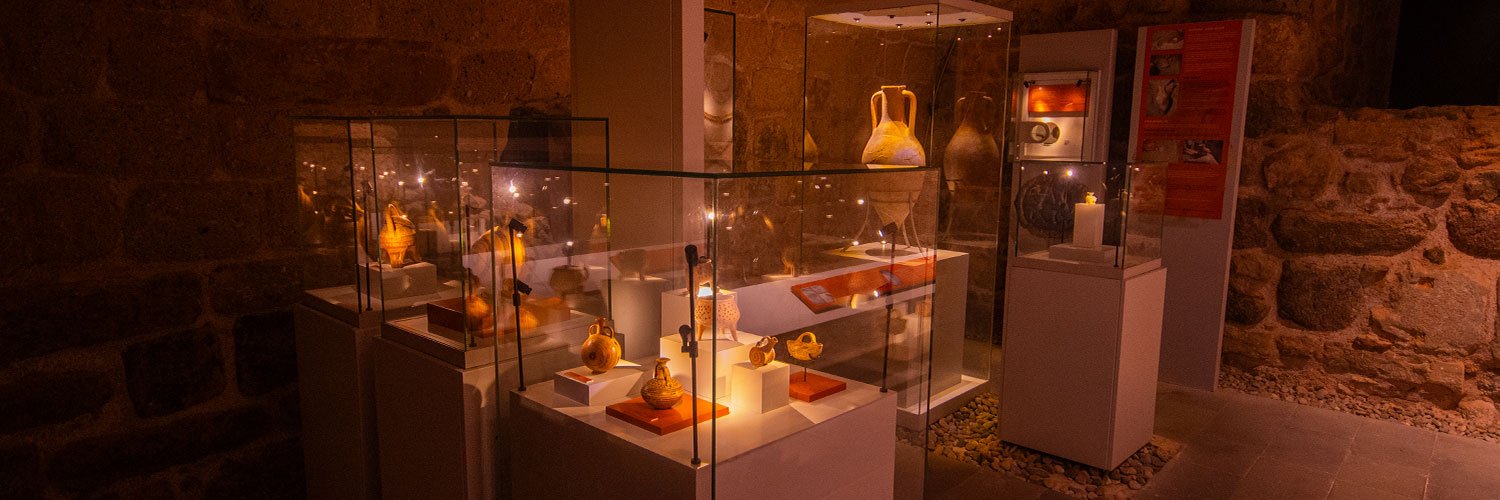





Add comment